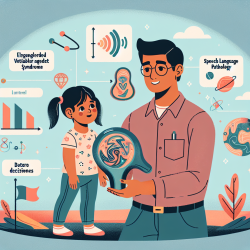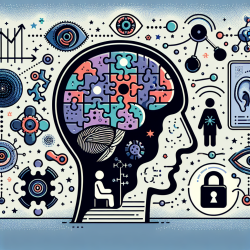Introduction
In the realm of child mental health, early and accurate identification of anxiety disorders is crucial. The study titled A psychometric evaluation of the interRAI Child and Youth Mental Health instruments (ChYMH) anxiety scale in children with and without developmental disabilities offers valuable insights into the effectiveness of the interRAI ChYMH Anxiety Scale. This blog post will explore how practitioners can leverage these findings to enhance their assessment skills and encourage further research.
The Need for Comprehensive Assessment Tools
Anxiety disorders are among the most common psychiatric conditions in children, affecting their long-term mental health and development. Early diagnosis and intervention can significantly improve outcomes. However, traditional assessment tools often lack the breadth and depth required to accurately diagnose anxiety, particularly in children with developmental disabilities. This gap highlights the need for robust, comprehensive tools like the interRAI ChYMH Anxiety Scale.
Key Findings from the Research
The study conducted a psychometric evaluation of the interRAI ChYMH Anxiety Scale, focusing on its reliability and validity across diverse child populations. The results indicated:
- Reliable Internal Consistency: The scale demonstrated consistent internal reliability, making it a dependable tool for assessing anxiety symptoms.
- Factor Structure: The factor analysis revealed that the scale items effectively captured the construct of anxiety, functioning cohesively as a unified measure.
- Convergent Validity: The Anxiety Scale showed moderate-to-strong convergent validity with established measures like the Child Behaviour Checklist (CBCL) and the Behaviour Assessment System for Children (BASC-3).
Implications for Practitioners
Practitioners can enhance their assessment practices by integrating the interRAI ChYMH Anxiety Scale into their toolkit. Here’s how:
- Holistic Evaluation: The scale’s comprehensive approach allows practitioners to assess anxiety within the broader context of a child’s mental and physical health, providing a more nuanced understanding of their needs.
- Multi-Informant Data: By incorporating data from various sources (e.g., caregivers, healthcare providers), practitioners can gain a well-rounded view of the child’s anxiety symptoms, reducing the risk of misdiagnosis.
- Focus on Developmental Disabilities: The study highlights the scale’s effectiveness in assessing anxiety in children with developmental disabilities, a group often underserved by traditional tools.
Encouraging Further Research
While the study provides strong evidence for the interRAI ChYMH Anxiety Scale’s utility, there is always room for further exploration. Researchers are encouraged to:
- Expand Sample Diversity: Future studies should include more diverse populations to enhance the generalizability of the findings.
- Longitudinal Studies: Investigating the scale’s predictive validity over time can provide insights into its effectiveness in monitoring anxiety progression and treatment outcomes.
- Comparative Analyses: Comparing the interRAI ChYMH Anxiety Scale with other assessment tools can further validate its efficacy and highlight areas for improvement.
Conclusion
The interRAI ChYMH Anxiety Scale offers a promising solution for accurately assessing anxiety in children, particularly those with developmental disabilities. By integrating this tool into their practice, practitioners can make data-driven decisions that enhance outcomes for children. As we continue to refine our assessment methods, ongoing research will be vital in ensuring that we meet the diverse needs of all children.
To read the original research paper, please follow this link: A psychometric evaluation of the interRAI Child and Youth Mental Health instruments (ChYMH) anxiety scale in children with and without developmental disabilities.










